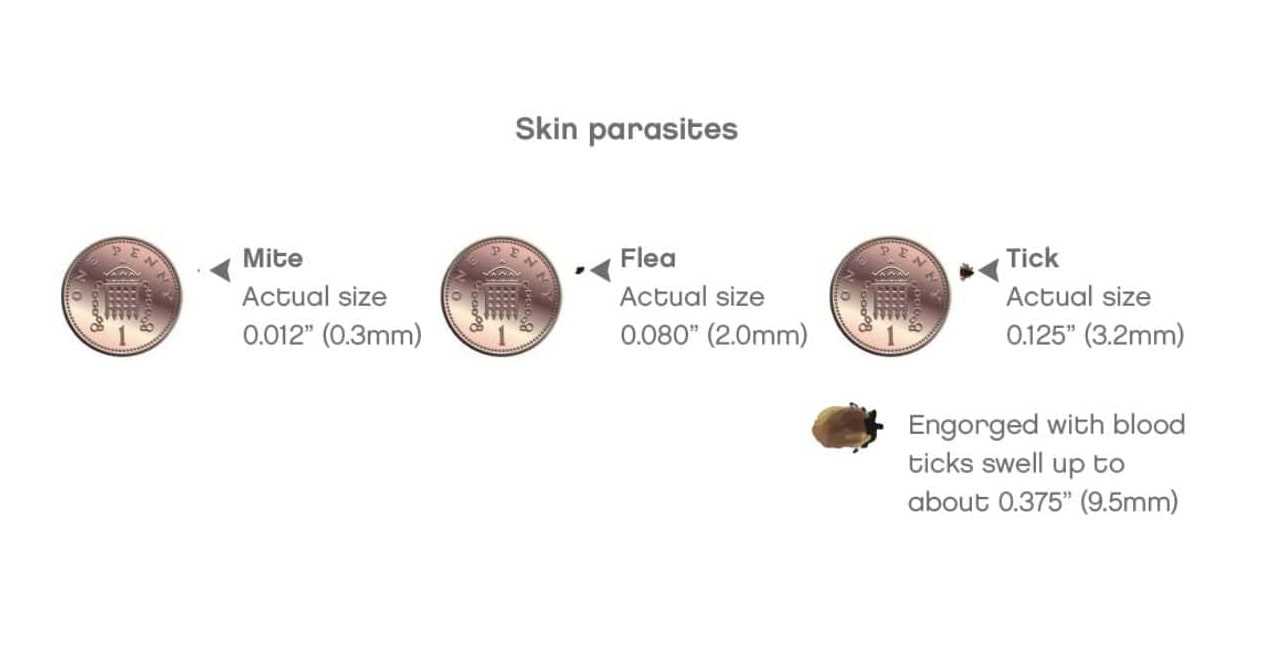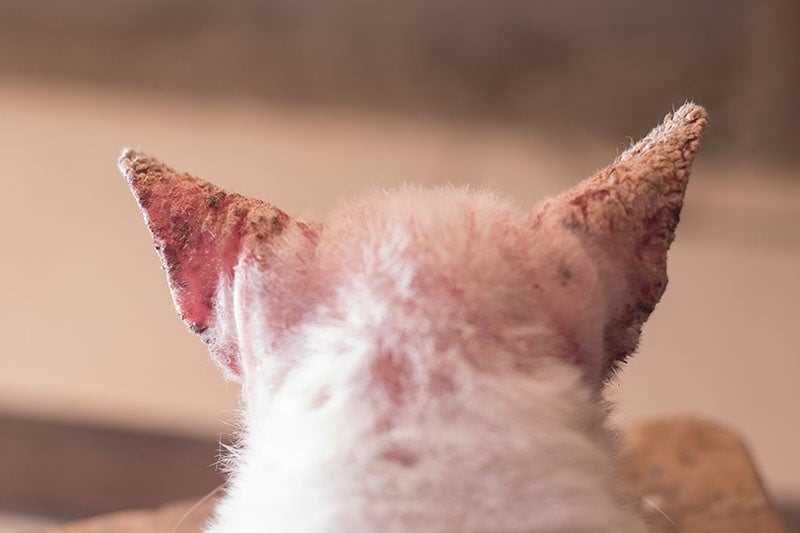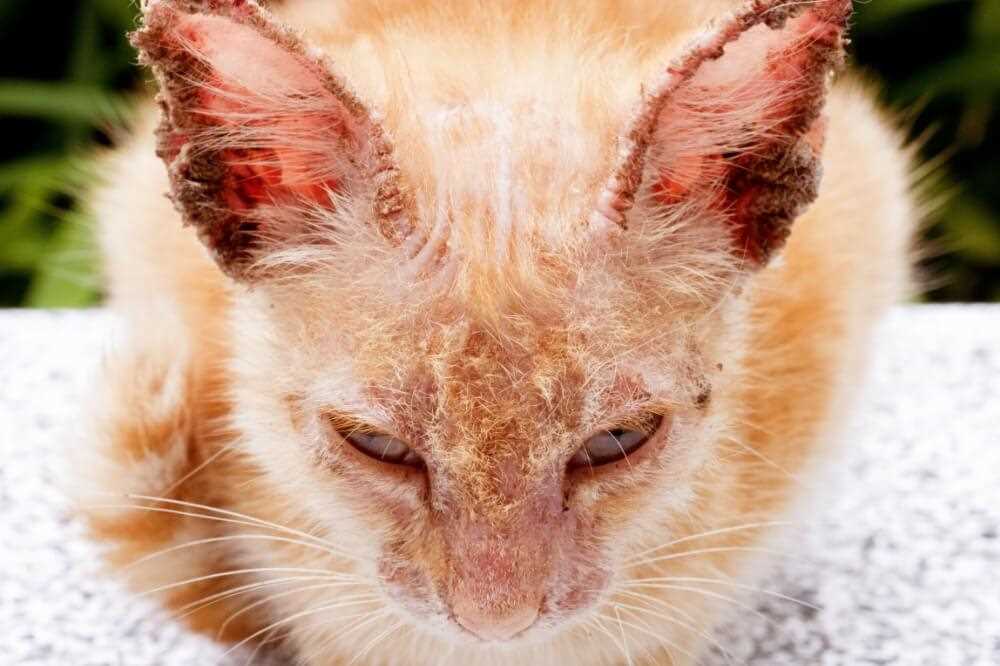Yes, it’s possible for a home-dwelling feline to experience a skin condition caused by parasites, commonly referred to as mange. These mites can invade even the most pampered pets. It’s crucial to be aware of the signs and symptoms so you can act quickly.
In my experience, itching, hair loss, and redness are telltale indicators of this condition. If my human notices these symptoms, a visit to the vet is essential for appropriate diagnosis and treatment. Ignoring these signs can lead to more severe skin issues and discomfort.
Preventative measures play a key role in keeping these pesky invaders at bay. Regular grooming and maintaining a clean living environment can significantly reduce the risk. Additionally, discussing mite prevention with a veterinarian can provide tailored strategies for keeping our homes safe and healthy.
Understanding Skin Conditions in Felines
It’s possible for a house-dwelling feline to experience skin issues commonly associated with external parasites. Factors such as exposure to infected animals or contaminated environments can bring about these conditions. Regular grooming and maintaining cleanliness in your living space can minimize risks.
Be vigilant for symptoms like itching, hair loss, or red patches on the skin. If you notice these signs, consulting a veterinarian is crucial for accurate diagnosis and treatment. It’s essential to rule out other skin problems that may resemble parasitic infections.
Preventative measures include keeping your living area free from pests and ensuring your furry companion is up to date on vaccinations and treatments. Always check if plants in your home, like plumeria, are toxic to cats, as some can exacerbate skin sensitivity.
Understanding the Types of Mange That Affect Cats

Three main types of skin conditions can afflict my fellow felines: sarcoptic, demodectic, and notoedric. Each type has unique characteristics and treatment needs.
- Sarcoptic mange is caused by the Sarcoptes scabiei mite. Symptoms include intense itching, hair loss, and red, inflamed skin. This type can spread to humans, so quick action is essential.
- Demodectic mange, on the other hand, is due to Demodex mites, which are naturally present on the skin. This condition is often seen in young or immunocompromised animals. Symptoms include localized hair loss and mild itchiness.
- Notoedric mange, caused by Notoedres cati mites, primarily affects the ears and face. Symptoms mirror those of sarcoptic mange, leading to severe irritation and discomfort.
Recognizing the symptoms early increases the chance of successful treatment. If you notice any signs of skin issues, consult a veterinarian promptly.
For those wondering about nutrition, check out this link about whether is kitten food good for senior cats. Proper diet can support overall health, which is crucial when dealing with skin conditions.
Signs and Symptoms of Skin Infestation in Felines

Itching and excessive scratching are the most noticeable signs. If I’m constantly pawing at my fur or rolling around on the floor, something might be troubling my skin.
Look for patches of hair loss. These can appear as bald spots or thinning fur, usually in areas where I scratch the most. Redness and inflammation of the skin are also key indicators.
Observe any changes in my behavior. If I seem more irritable or withdrawn than usual, it could be a sign of discomfort. Increased grooming can lead to sore spots and further hair loss.
Check for crusty or scabby areas on my skin. These can develop from scratching and irritation, leading to secondary infections if not addressed promptly.
Be alert for changes in my appetite. If I’m eating less or showing signs of lethargy, it might be due to skin irritation or discomfort caused by the condition.
Lastly, note any unusual odors coming from my skin. Foul smells can indicate infections or underlying issues that require immediate veterinary attention.
Prevention and Treatment Options for Indoor Cats with Mange
Regular grooming is a must. Brushing helps remove loose fur and skin debris, reducing the chance of infestation. Use a fine-toothed comb specifically designed for parasites to check for any signs of trouble.
Maintain a clean living environment. Frequent vacuuming and washing of bedding can minimize exposure to mites. Ensure that any shared spaces or items are sanitized regularly.
Topical Treatments

Consult a veterinarian for appropriate medicated shampoos or topical solutions. These products target specific types of mites and can alleviate symptoms effectively. Follow the application instructions carefully to ensure maximum benefits.
Oral Medications

In some cases, oral medications may be necessary. These treatments can address severe infestations and help restore skin health. A vet will provide guidance on the right dosage and duration.
Monitor for any signs of improvement or adverse reactions during treatment. Regular check-ups will help assess the effectiveness and make adjustments as needed. Keeping an eye on overall health is key to a full recovery.
Yes, it’s possible for a home-dwelling feline to experience a skin condition caused by parasites, commonly referred to as mange. These mites can invade even the most pampered pets. It’s crucial to be aware of the signs and symptoms so you can act quickly.
In my experience, itching, hair loss, and redness are telltale indicators of this condition. If my human notices these symptoms, a visit to the vet is essential for appropriate diagnosis and treatment. Ignoring these signs can lead to more severe skin issues and discomfort.
Preventative measures play a key role in keeping these pesky invaders at bay. Regular grooming and maintaining a clean living environment can significantly reduce the risk. Additionally, discussing mite prevention with a veterinarian can provide tailored strategies for keeping our homes safe and healthy.
Understanding Skin Conditions in Felines
It’s possible for a house-dwelling feline to experience skin issues commonly associated with external parasites. Factors such as exposure to infected animals or contaminated environments can bring about these conditions. Regular grooming and maintaining cleanliness in your living space can minimize risks.
Be vigilant for symptoms like itching, hair loss, or red patches on the skin. If you notice these signs, consulting a veterinarian is crucial for accurate diagnosis and treatment. It’s essential to rule out other skin problems that may resemble parasitic infections.
Preventative measures include keeping your living area free from pests and ensuring your furry companion is up to date on vaccinations and treatments. Always check if plants in your home, like plumeria, are toxic to cats, as some can exacerbate skin sensitivity.
Understanding the Types of Mange That Affect Cats

Three main types of skin conditions can afflict my fellow felines: sarcoptic, demodectic, and notoedric. Each type has unique characteristics and treatment needs.
- Sarcoptic mange is caused by the Sarcoptes scabiei mite. Symptoms include intense itching, hair loss, and red, inflamed skin. This type can spread to humans, so quick action is essential.
- Demodectic mange, on the other hand, is due to Demodex mites, which are naturally present on the skin. This condition is often seen in young or immunocompromised animals. Symptoms include localized hair loss and mild itchiness.
- Notoedric mange, caused by Notoedres cati mites, primarily affects the ears and face. Symptoms mirror those of sarcoptic mange, leading to severe irritation and discomfort.
Recognizing the symptoms early increases the chance of successful treatment. If you notice any signs of skin issues, consult a veterinarian promptly.
For those wondering about nutrition, check out this link about whether is kitten food good for senior cats. Proper diet can support overall health, which is crucial when dealing with skin conditions.
Signs and Symptoms of Skin Infestation in Felines

Itching and excessive scratching are the most noticeable signs. If I’m constantly pawing at my fur or rolling around on the floor, something might be troubling my skin.
Look for patches of hair loss. These can appear as bald spots or thinning fur, usually in areas where I scratch the most. Redness and inflammation of the skin are also key indicators.
Observe any changes in my behavior. If I seem more irritable or withdrawn than usual, it could be a sign of discomfort. Increased grooming can lead to sore spots and further hair loss.
Check for crusty or scabby areas on my skin. These can develop from scratching and irritation, leading to secondary infections if not addressed promptly.
Be alert for changes in my appetite. If I’m eating less or showing signs of lethargy, it might be due to skin irritation or discomfort caused by the condition.
Lastly, note any unusual odors coming from my skin. Foul smells can indicate infections or underlying issues that require immediate veterinary attention.
Prevention and Treatment Options for Indoor Cats with Mange
Regular grooming is a must. Brushing helps remove loose fur and skin debris, reducing the chance of infestation. Use a fine-toothed comb specifically designed for parasites to check for any signs of trouble.
Maintain a clean living environment. Frequent vacuuming and washing of bedding can minimize exposure to mites. Ensure that any shared spaces or items are sanitized regularly.
Topical Treatments

Consult a veterinarian for appropriate medicated shampoos or topical solutions. These products target specific types of mites and can alleviate symptoms effectively. Follow the application instructions carefully to ensure maximum benefits.
Oral Medications

In some cases, oral medications may be necessary. These treatments can address severe infestations and help restore skin health. A vet will provide guidance on the right dosage and duration.
Monitor for any signs of improvement or adverse reactions during treatment. Regular check-ups will help assess the effectiveness and make adjustments as needed. Keeping an eye on overall health is key to a full recovery.
Yes, it’s possible for a home-dwelling feline to experience a skin condition caused by parasites, commonly referred to as mange. These mites can invade even the most pampered pets. It’s crucial to be aware of the signs and symptoms so you can act quickly.
In my experience, itching, hair loss, and redness are telltale indicators of this condition. If my human notices these symptoms, a visit to the vet is essential for appropriate diagnosis and treatment. Ignoring these signs can lead to more severe skin issues and discomfort.
Preventative measures play a key role in keeping these pesky invaders at bay. Regular grooming and maintaining a clean living environment can significantly reduce the risk. Additionally, discussing mite prevention with a veterinarian can provide tailored strategies for keeping our homes safe and healthy.
Understanding Skin Conditions in Felines
It’s possible for a house-dwelling feline to experience skin issues commonly associated with external parasites. Factors such as exposure to infected animals or contaminated environments can bring about these conditions. Regular grooming and maintaining cleanliness in your living space can minimize risks.
Be vigilant for symptoms like itching, hair loss, or red patches on the skin. If you notice these signs, consulting a veterinarian is crucial for accurate diagnosis and treatment. It’s essential to rule out other skin problems that may resemble parasitic infections.
Preventative measures include keeping your living area free from pests and ensuring your furry companion is up to date on vaccinations and treatments. Always check if plants in your home, like plumeria, are toxic to cats, as some can exacerbate skin sensitivity.
Understanding the Types of Mange That Affect Cats

Three main types of skin conditions can afflict my fellow felines: sarcoptic, demodectic, and notoedric. Each type has unique characteristics and treatment needs.
- Sarcoptic mange is caused by the Sarcoptes scabiei mite. Symptoms include intense itching, hair loss, and red, inflamed skin. This type can spread to humans, so quick action is essential.
- Demodectic mange, on the other hand, is due to Demodex mites, which are naturally present on the skin. This condition is often seen in young or immunocompromised animals. Symptoms include localized hair loss and mild itchiness.
- Notoedric mange, caused by Notoedres cati mites, primarily affects the ears and face. Symptoms mirror those of sarcoptic mange, leading to severe irritation and discomfort.
Recognizing the symptoms early increases the chance of successful treatment. If you notice any signs of skin issues, consult a veterinarian promptly.
For those wondering about nutrition, check out this link about whether is kitten food good for senior cats. Proper diet can support overall health, which is crucial when dealing with skin conditions.
Signs and Symptoms of Skin Infestation in Felines

Itching and excessive scratching are the most noticeable signs. If I’m constantly pawing at my fur or rolling around on the floor, something might be troubling my skin.
Look for patches of hair loss. These can appear as bald spots or thinning fur, usually in areas where I scratch the most. Redness and inflammation of the skin are also key indicators.
Observe any changes in my behavior. If I seem more irritable or withdrawn than usual, it could be a sign of discomfort. Increased grooming can lead to sore spots and further hair loss.
Check for crusty or scabby areas on my skin. These can develop from scratching and irritation, leading to secondary infections if not addressed promptly.
Be alert for changes in my appetite. If I’m eating less or showing signs of lethargy, it might be due to skin irritation or discomfort caused by the condition.
Lastly, note any unusual odors coming from my skin. Foul smells can indicate infections or underlying issues that require immediate veterinary attention.
Prevention and Treatment Options for Indoor Cats with Mange
Regular grooming is a must. Brushing helps remove loose fur and skin debris, reducing the chance of infestation. Use a fine-toothed comb specifically designed for parasites to check for any signs of trouble.
Maintain a clean living environment. Frequent vacuuming and washing of bedding can minimize exposure to mites. Ensure that any shared spaces or items are sanitized regularly.
Topical Treatments

Consult a veterinarian for appropriate medicated shampoos or topical solutions. These products target specific types of mites and can alleviate symptoms effectively. Follow the application instructions carefully to ensure maximum benefits.
Oral Medications

In some cases, oral medications may be necessary. These treatments can address severe infestations and help restore skin health. A vet will provide guidance on the right dosage and duration.
Monitor for any signs of improvement or adverse reactions during treatment. Regular check-ups will help assess the effectiveness and make adjustments as needed. Keeping an eye on overall health is key to a full recovery.






